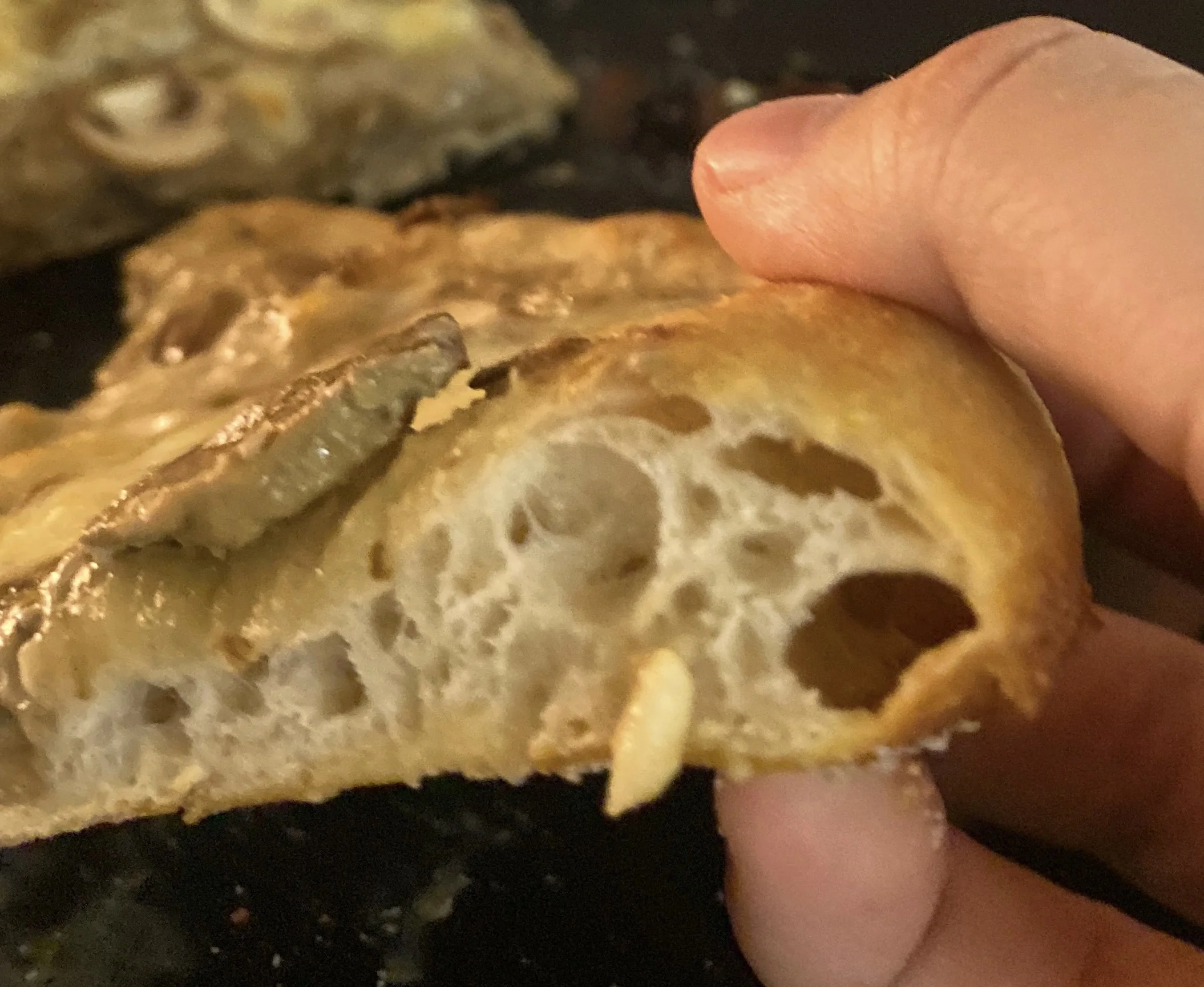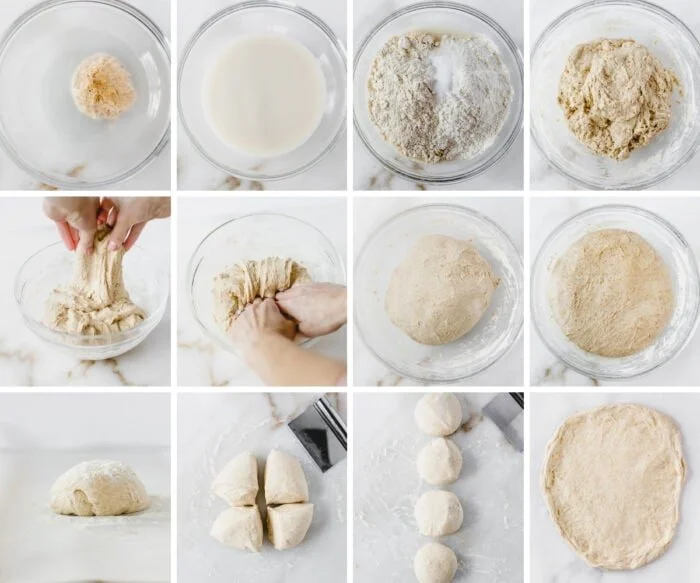Homemade Pizza for Beginners: My Early Mistakes (and What I Learned After Four Years)
Table of Contents
How it started
Why recipes often don’t work
The turning point
Lesson 1: Choose one recipe and repeat
Lesson 2: Learn the basic stages of dough
Lesson 3: Look at the dough, not the clock
Lesson 4: Keep simple notes
Final thoughts
1. How it started
When I first tried Neapolitan pizza 6 years ago in Spain, it was light, airy, with a crust that melted in the mouth. I wanted the same at home.
my first neapolitan pizza
At that point, I was like most beginners: I’d watched a dozen YouTube videos and still wasn’t sure how to bake the dough. One recipe said use bread flour, another said all-purpose. Some used pizza stones, others fancy pizza ovens. The more I watched, the more confusing it felt.
Frozen pizzas weren’t an option — they always tasted flat and heavy. Delivery wasn’t much better and often felt like full of fats and processed ingredients. Eating out was expensive. Making it myself seemed like the only way to get a simple pizza with a good crust at home.
2. Why recipes often don’t work
Even my favorite pizzeria once shared their recipe: flour, salt, yeast. That was it. No hydration level, no timing, no signs to look for. I followed it and got a stiff, lifeless crust.
my first pizza
I also joined a course. It showed how to stretch dough, but not how gluten works, how flour and yeast work together. Without that, it felt like guessing. I kept thinking: maybe I need a stone, maybe a mixer, maybe special flour. But I didn’t want to invest in gear that only made sense if I baked every week.
my pizza after the course
3. The turning point
Things changed when a friend who worked as a baker shared a recipe — with full details. Flour type, fermentation time, shaping tips.
For the first time, I baked pizza that rose properly. The crust was airy inside, crisp outside. It tasted close to a pizzeria pizza, even though it came from my regular oven. That one success showed me it is possible to make homemade pizza worth the effort, even without a wood-fired oven.
first succesful one
4. Lesson 1: Choose one recipe and repeat
When you’re starting, the temptation is to keep searching for the “best” homemade pizza recipe. But that constant switching keeps you stuck.
Choose one recipe with details. Repeat it. Don’t worry if the first tries aren’t perfect. Each bake gives you new information — and over time, you start to recognize what good dough feels like.
5. Lesson 2: Learn the basic stages of dough
Almost every dough follows the same cycle:
Mix ingredients.
Ferment and let it ferment and mature.
Divide and shape.
Let it rise again.
Bake.
That’s it. Later you can try preferments like biga or sourdough, but you don’t need them at first. A simple direct dough already gets you a nice, light, crispy base that doesn’t taste doughy.
6. Lesson 3: Look at the dough, not the clock
Timers can be misleading. Fermentation depends on flour, yeast, and temperature.
Warm kitchen = faster rise.
Cool kitchen = slower rise.
Whole wheat flour = faster, because it feeds yeast more.
Instead of asking “how many hours,” look at the dough. Has it doubled? Does it feel airy with bubbles inside? When you press it, does it spring back slowly? These signs tell you more than numbers on a recipe card.
7. Lesson 4: Keep simple notes
At first I thought I’d remember everything — which flour, how long it fermented, how warm the kitchen was. In reality, I forgot.
Once I started taking notes and quick photos, progress became visible. I saw why one dough stayed dense and another turned elastic. That made each bake easier to improve and repeat.
8. Final thoughts
Homemade pizza isn’t about chasing tools or “perfect” recipes. You don’t need a pizza stone or a stand mixer to start. A bowl, a scale, and a regular oven are enough.
What matters is choosing one recipe, watching the dough, and keeping track of what you do. Do that, and you’ll see steady progress — from heavy crusts to pizzas with light, airy edges that taste far better than frozen or delivery.
If you’d like to learn how to bake pizza at home that tastes close to what you get in a good restaurant, join the waitlist for my workshop at ovenunderground.com
Q&A
Q1: What’s the easiest homemade pizza recipe for beginners?
A direct dough with flour, water, yeast, salt, honey and oil. Repeat it until you feel confident.
Q2: Do I need a pizza stone?
No. A heavy pan and oven broiler can give you a crisp crust.
Q3: Is homemade pizza worth the effort?
Yes. Even on a budget, you get better taste and full control over ingredients.
Q4: Why does my dough stay sticky?
It usually means gluten hasn’t developed yet. Or you overheated the dough in the mixer.
Q5: How do I know if my pizza is getting better?
Take photos!










